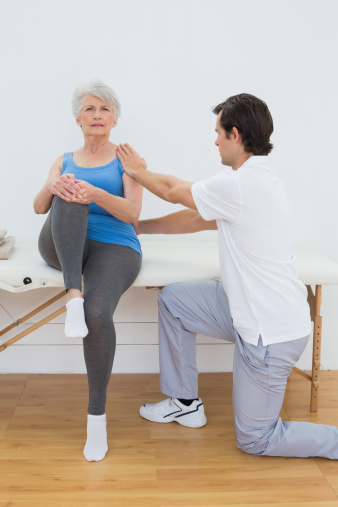Written By: André Meintjes, M.P.T.,C.F.E., Ph.D.

We all know someone who has had a bone mineral density test and been diagnosed with osteopenia or osteoporosis. This means they have lower than normal bone mineral density and hence their bones may be more fragile. This in itself does not necessarily cause fractures but does need to be addressed.
A comprehensive, multifaceted approach to the treatment of osteopenia and osteoporosis will have a significant impact on bone density. Clearly there are suitable medications one can take which your physician can address (beyond my scope of practice for sure). I am sure you have all seen the numerous commercials on TV for these medications with that classic … “Ask your doctor about Boniva (or whatever medication they are advertising)” at the end.
The predictive value of bone mineral density measurements has been called into question in that it can under or overestimate density by 20% to 50%. If it underestimates the density of the bone, you may receive unnecessary treatment. If it overestimates bone mineral density you may not receive the most effective treatment. So, what should you do?
Recognize that it is the fall that causes fractures and not the osteoporosis or osteopenia. So if you address the physical limitations causing falls you will reduce the frequency of falls and thus reduce fractures. 75% of fractures occur in people without osteoporosis. 80% of low impact fractures occur in people who do not have osteoporosis. Yes, it is the falls.
Preventing falls among older adults reduces the incidence of fractures, sometimes by over 50%. Scientific evidence supports a reduction in fall frequency through strength and balance training, followed by reductions in the number of psychotropic drugs, dietary supplementation with Vitamin D and calcium and, in high risk populations, assessment and modification of home hazards.
This is where physical therapy is involved. A fall prevention program should include targeted strengthening and stretching, static and dynamic balance training, posture modification, home hazard removal and of course an ongoing home exercise program which should be completed on a daily basis.
How do you know if you, a friend or a family member may need a fall prevention (and hence fracture prevention) program? Answer “YES” to one of the questions below and you should consult with a physical therapist.
- 1. Do you have difficulty going from a sitting to a standing position?
- 2. Have you fallen without a known precipitating event?
- 3. Have you fallen more than once in the past 6 months?
- 4. Does it take you longer than 13 seconds to get up from a seated position and walk 10 feet?
- 5. Do you have osteopenia or osteoporosis?
- 6. Are you unsure if you would benefit from a fall prevention program?
Do your own assessment and decide if you, a family member or a friend may need to address balance issues with a physical therapist. You will be glad you did.
André is the owner of Custom Physical Therapy in the Reno-Sparks area of Nevada. Born in South Africa, André came to the USA to study in 1988 with plans of returning home after graduating with his PH.D. in Physiology. Twenty plus years later he’s still here! His approach to treating patients is to address the cause of the problem and provide each patient with preventative measures so they can remain fully functional and pain free without seeking further medical advice.
For more check our André’s blog at customphysicaltherapy.wordpress.com
